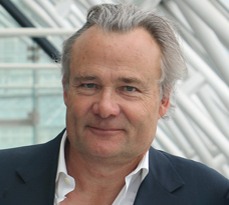Many years ago, I created a timeline of emerging science and technology with Alex Ayad at Imperial College. The visualisation featured 5 coloured lines representing Digital-tech, Nanotech, Green-tech, Biotech and Neuro-tech (an adaptation of the popular STEEP scenario categorisation (Society, Technology, Economy, Environment and Politics), itself an adaptation of PESTLE.
I cannot remember whose idea it was, but we then added 3 concentric circles representing Present, Probable and Possible Futures or developments (The 3Ps Model). The idea was that Present (the inner circle) would represent current drivers of change. Being the smallest physical area on the diagram, this inner circle must be thought about clearly and boiled down to only the most important factors.
Probable was then used to represent the most likely ideas and events (with subsequent iterations defining this as being at least 50% probable by an agreed date, commonly the year 2030 or 2040). Possible, was simply anything that wasn’t physically impossible by the same date. Possible can be used to capture weak signal, emergent drivers, or wild card events.
At the Entrepreneurship Centre at CJBS, I have adapted this model further, adding Preposterous futures in place of Possible futures to stretch peoples’ imaginations further or challenge what some people regard as crazy (as you might imagine, sci-fi ideas abound in this twilight zone).
More recently, I have added a 4th and final P. Preferred futures capture the idea that whilst it may be impossible to predict the future at anything approaching a granular level, it is not impossible to invent the future collectively and proactively. Rather than worrying about what the future might look like and how we’d likely respond, preferred futures asks people to imagine what kind of future they’d like for themselves and perhaps their children and then work backwards to capture the key shifts required from the present day onwards to make such a future an eventual reality. One of traps with futures thinking is that technology can be seen as a dominant or deterministic force, in other words inevitable. Preferred futures give people the physical space to consider ethical and philosophical questions and to think in terms of the future as something less abstract and more personal.
Moreover, however this model is used, one major advantage of being pictural as opposed to a purely text-based word document, is that it helps people to move away from linear extrapolation. Furthermore, the way the diagram, is laid out allows for elements of the map intersect or react. For example, it’s easy to consider countertrends, pushbacks, or second-order effects.
Finally, whilst it’s possible to build large and hugely complex roadmaps using the 4P (or 3P) model, most are modest and can easily be printed A2 or A3 size, which enables them to occupy space on an office wall. This, in turn, allows the thinking on the map to penetrate the brain daily and to invite reaction from passers-by, which is something that a word document simply cannot do.
Richard Watson, Futurist in Residence, Cambridge Judge Entrepreneurship Centre is helping us to identify, interpret and visualise what we’ve seen before, what we see now, and what we might see next for those inspiring and enterprising individuals, teams and organisations that we have the privilege to work within this very special place. Find out more about his projects >





Leave a Reply